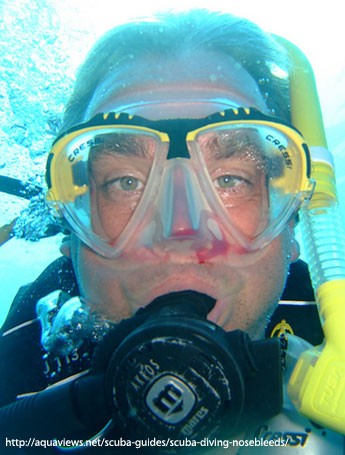Holiday Customer Support Closure
Please note that our customer support will be closed for the holidays starting December 24th through January 4th.
DEPTH Blog
Sinuses and Diving
The term “sinus” can mean any channel, hollow space, or cavity in a bone, or a dilated area in a blood vessel or soft tissue; most often sinus refers to the four, paired, mucus-lined air cavities in the facial bones of the head. The same kind of membrane lines the sinuses and nose, so nasal infections spread easily to the sinuses. In sinusitis, mucous membranes inflame and swell, closing sinus openings and preventing infected material from draining. If nasal inflammation, congestion, deformities, or masses block sinus openings, the sinus lining swells and inflames, absorbing pre-existing gas that forms negative pressure. When blockage occurs during descent, the relative vacuum in the sinus increases the risk of damage. Hemorrhage into the sinus and then into the divers mask may occur.
The frontal sinus is most commonly affected by barotrauma, followed by the maxillary sinus. With maxillary sinus involvement, the diver often experiences pain in the maxillary teeth due to compression of a branch of the fifth cranial nerve, which runs along the base of the maxillary sinus. Additionally, maxillary sinus barotrauma can cause compression of another branch of the fifth cranial nerve, causing tingling and numbness of the cheek and upper lip.
Do not dive if you have congested sinuses. Various over-the-counter and prescription medications open sinus passages. If a decongestant wears off during your dive, the sinuses become closed spaces (rebound effect) containing high pressure air. This can lead to a reverse block on ascent, where excess gas volume will not vent during ascent. Sinus barotrauma can also occur during ascent if blockage of a one-way valve of the sinus, by inflamed mucosa, cysts, or polyps, allows equalization on descent, but impairs it on ascent.
(Source: NOAA Diving Manual: Diving for Science and Technology, 5th Edition; 2013, Best Publishing Company)
SUGGESTED READING
|
NOAA Diving Manual, 5th Edition Used by divers everwhere, the NOAA Diving Manual 5th Edition is the most comprehensive resource for learning about dive equipment, dive planning, decompression, and emergency medical care of an injured diver. Chapters also include more advanced concepts such as physics and physiology, mixed gas diving, surface-supplied diving, saturation diving, and the list goes on. Need a textbook for your next course? Use this manual! The manual is the perfect resource for scientific divers, commercial, military, public safety, recreational divers, and dive leaders! |
When you subscribe to the blog, we will send you an e-mail when there are new updates on the site so you wouldn't miss them.









